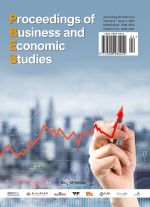Abstract
In order to promote the development of the mineral industry in their countries, Tanzania and Uganda have revised their mining acts in recent years, and the reform of the mineral rights licensing system is one of the key points. This paper is intended to make a comparative analysis of the two countries’ mineral rights licensing systems in terms of the main body of approval, approval time, approval information, approval conditions and application fees. Through comparison, it can be seen that the two countries focus on the role of the government in the mining rights licensing, jurisdiction is more centralized, access system is fairer, the review is more stringent, and the provisions are clearer and more concise. On the whole, Tanzania’s mineral rights licensing system is more detailed and standardized than Uganda’s, and is more operational in practice. In addition to exploring the advantages of the two countries’ mining rights licensing system, this paper also summarizes and analyzes the shortcomings of the two countries’ mining rights licensing system, how to verify the review of information in the two countries’ mining rights licensing system, how to effectively supervise the activities after licensing, and how to continue to deepen the reform of the two countries’ ministries of mines and minerals, which are responsible for the important task of strengthening the administrative capacity and improving the efficiency of the administration, is still an important issue that deserves continuous and in-depth study for the two countries. For both countries, this is still a topic that deserves continuous and in-depth research. Through the comparative analysis of the Tanzanian and Ugandan mineral rights licensing systems, this paper clearly demonstrates the similarities and differences between the two systems as well as their advantages and disadvantages, which can provide decision-making references for relevant mining investments and help investors more comprehensively assess the legal environment, policy risks and operating costs of mining development in the two countries, so as to optimize their investment strategies and reduce compliance risks.
References
The Mining Act, 2010, Tanzania, Article 28.
The Mining Act, 2003, Uganda, Article 26.
The Mining Act, 2010, Tanzania, Article 36–37.
The Mining Act, 2003, Uganda, Article 35.
The Mining Act, 2010, Tanzania, Article 49.
The Mining Act, 2003, Uganda, Article 41.
The Mining Act, 2003, Uganda, Article 21.
The Mining Act, 2010, Tanzania, Article 31.
The Mining Act, 2003, Uganda, Article 28.
The Mining Act, 2010, Tanzania, Article 38.
The Mining Act, 2003, Uganda, Article 36.
The Mining Act, 2010, Tanzania, Article 50.
The Mining Act, 2003, Uganda, Article 43.
Uganda License Fees Effective 1st July 2016.
Zhu Y, 2013, Contemporary African Industry and Mining. Zhejiang Publishing United Group, Zhejiang People’s Publishing House.
Auditor General, 2015, Regulation, Monitoring and Promotion of the Mining Sector by Ministry of Energy and Mineral Development, 2015: 2–3.
